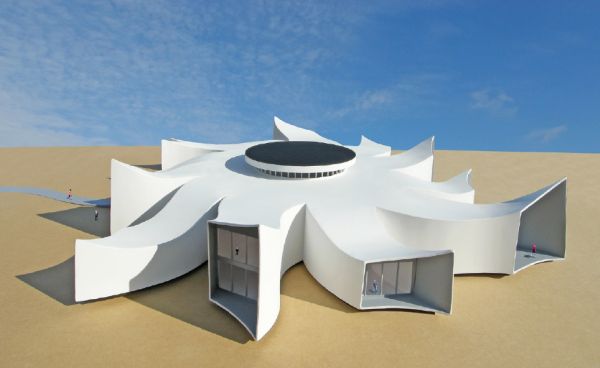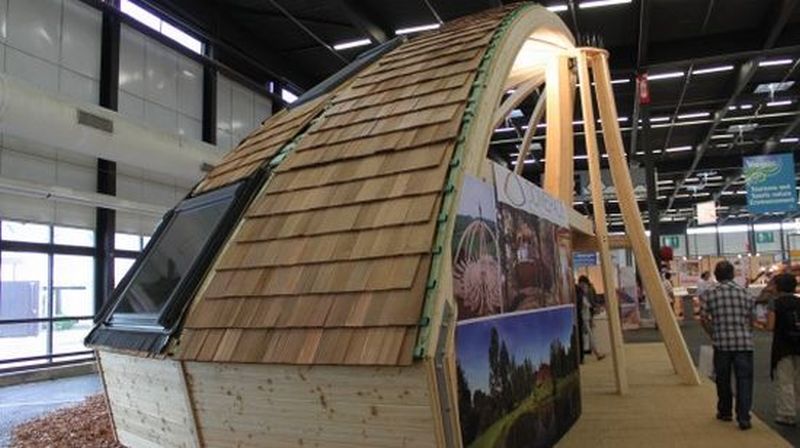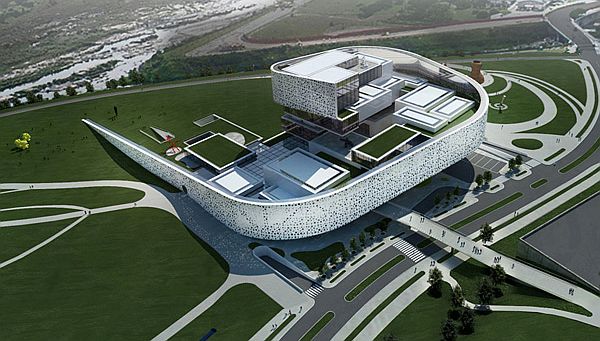Black holes as a concept of spacetime from where even light cannot escape, has befuddled scientists and enthusiasts for a long time, but this time, the ensnaring allure of this space related mystery has been conceptualized in a symbolic bearing with a tangible structure. Yes, we are talking about the Black Hole Research Center, contrived by none other than Michael Jantzen.

According to the designer, his conceptualized proposal will act as a massive, solar powered structure, which would be located in the middle of the desert. The building, as the name suggests, will comprise of a Black Hole Research Center, imbibed with all the modernistic facilities available for the endeavor. Since we were talking about symbolism, the visual scheme of things is actually inspired by a large black hole at the middle of a spiraling galaxy.
In this case, the ‘unfathomable void of space’ is embodied by a large circular array of dark solar panels, installed at the center of the spiral roof. This sustainable installation will act the core system of clean and renewable power output for the whole research facility. But beyond production of electricity, the virtues of green technology will be present in a number of structural attributes of the gargantuan building.
For example, the designer has considered the employing of passive architectural techniques for naturalistic lighting within the large volumetric space. This entails the slight elevation of the conspicuously dark solar array from the roof level for allowance of small openings. This unique feature is better known as ‘clerestory’ in architecture. The clerestory in turn allows for induction of natural sunlight into the building from a much higher level, thus facilitating the expansion and diffusion of illumination on the inside.
The heightened openings also have the dual functionality of ventilation, especially for warm air to rise above and pass through them (a very important feature, needed in grave desert conditions). As for cross ventilation (and accentuated lighting), the facility is bedecked with a slew of shaded glass doors and windows.
Coming to the robust structural attributes, green technology once again provides for the core theme of the whole conception. According to the designer, the building materials to be used for the project will entirely consist of light weight, eco friendly, concrete composite components. This would actually help in supporting the irregular, spiraling plan, complimented by a wide range of spatial zoning. For example, the offices and the labs are to be located in the extending ‘arms’, with half of them having at least two floors. The central atrium part will comprise of a large LED display (powered by solar energy) for active display and updates of the various researches done by the facility.
Finally, harking back to nigh poetic typology, the designer has envisaged his conception as the structural embodiment of real time black hole. In clear allusion to a black hole pulling light, the grandiose solar array of the center will absorb light, and then convert it into a final form of usable and sustained harnessed energy. So, at the end of the day, it meets two objectives; fulfilling an ardent symbolism and aptly mitigating carbon footprint.
Thanks: [Micheal Jantzen]




